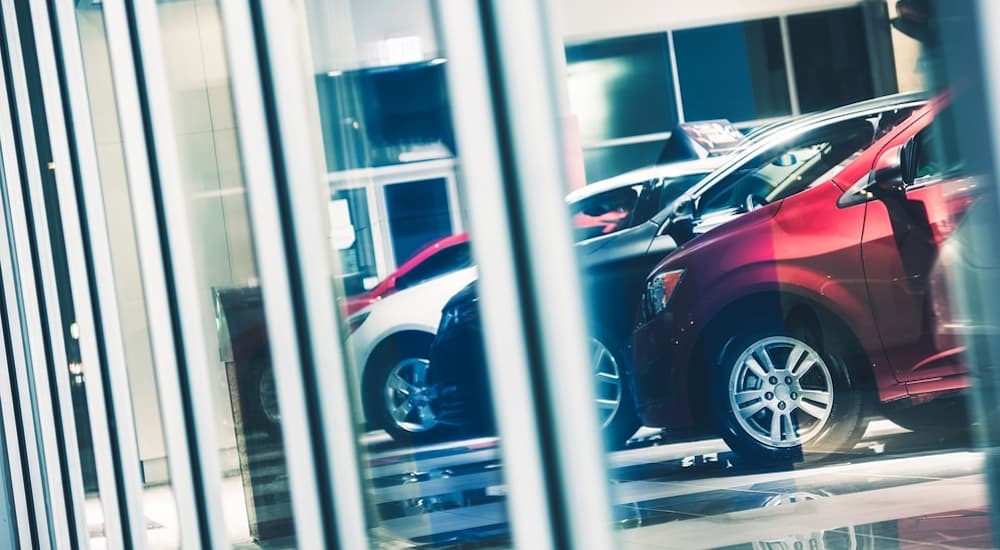The story goes something like this: compelled by your desire for a new vehicle, you begin to research new model year offerings, exploring some of your favorites, finding yourself drawn to the various bells and whistles available in higher trim levels. And why not? You work hard, and deserve nice things, right? So, you do some math. Perhaps you’re using the payment calculator on a dealer website, or maybe you’re confident in your own calculations. And it’s at this point that many people realize that a brand new vehicle purchase just isn’t feasible, based on the unique demands of their budget and/or lifestyle. But before you get all depressed at the thought of visiting a used car dealer, let’s set fire to some outdated stigma and resurrect your car buying dreams from the ashes.
The Elephant in the Room

I may not consider myself old (42 in the fall, for the sake of providing context) but I can remember a time when a used car dealership was viewed in a far different light than it is today. For most of my childhood, the used vehicle industry was viewed as a breeding ground for unreliable salespeople pushing low-quality vehicles, unsuspecting buyers falling victim to shady deals, and the inevitable disappointment to be born of both. Used car salesman represented the dregs of society, a criticism which was reflected in their appearance.
Older ones would inevitably sport unflattering combovers while wearing dated, patterned sports coats. Yelling aggressively over weekend television programming, they would try to compel you to visit their roadside lots for the best deals around. And the younger salesman weren’t much better; the only real difference is that they had traded those sports coats in for sleeker, shinier suits (the combovers would show up when they got older). Bottom-line, if there is a degree of truth behind every stereotype, used car salesman rank among the most easily criticized.
But setting aside personal attacks, customer dissatisfaction sat at the heart of the issue. So prevalent were examples of dissatisfied customers, that Federal and State laws were passed, beginning in the mid-1970s, designed to protect the consumer from unscrupulous and predatory practices. And while such regulation wasn’t a catch-all, it did help to enforce accountability on both sides of the purchase, while challenging the used car industry to evolve into the more reputable version that we know today.
And yes, it is more reputable than ever before. I became a licensed driver in 1995, and have purchased lightly used vehicles for nearly a quarter-of-a-century now. I have witnessed the progressive evolution of the industry first-hand, both personally as a consumer and as an automotive journalist. And while there’s still plenty of room left for improvements, the used vehicle marketplace – as a whole – has improved by near-incalculable leaps and bounds. And on top of that, pre-owned vehicles might just be one of the best values around.
They DO ‘Make Them Like They Used To’
So far, we have glazed over some of the cultural and regulatory reform which has helped to improve the used vehicle landscape. But there are other elements at play, as well; namely the improved quality of most used vehicles, and a growing awareness of why buying a used vehicle often proves to be a smarter investment.
In terms of the former, it’s important to recognize the power of perception. Turns of phrase like, ‘they don’t make them like they used to’ can be used to describe pretty much anything, and cars are no exception. But this kind of overly-romanticized nostalgia isn’t entirely true. Sure, our society is designed largely for disposability, but engineering advances alone have empowered most vehicles to last over a decade and reach the 200,000-mile mark. Many well-built and well-maintained offerings might even reach 15 years and exceed the 300,000-mile mark. And, of course, there are plenty of vehicles that live a much longer life. It all comes down to the unique attributes of each vehicle, as well as individual histories of use and maintenance. Fortunately, the greater availability of Vehicle History Reports helps to fill in the blanks, and provide a better understanding of those histories.
And, with only a few exceptions, used car dealers are required to inspect and refurbish vehicles as needed in order to ensure their suitability for resale. These assurances, combined with your own responsibility to inspect a vehicle (personally, or with the help of a skilled eye) prior to purchase helps to minimize any risk of surprise dissatisfaction. But that doesn’t even touch on the built-in value of buying used.
The Best Value Around
Have we mentioned depreciation yet? No? Well, let’s get down to it. We’ve all heard it before, but a new vehicle begins to depreciation the moment it’s driven off the dealer lot. That’s not an old wives’ tale. In fact, it loses up to 11% of its value before the rear tires even hit the streets.
That’s important to understand, because the most aggressive rate of depreciation on any vehicle occurs within its first five years of ownership, gradually slowing with the passage of time. Considering that most of today’s used vehicles fall between ‘one’ and ‘five’ years of age, it means that the previous owner of any vehicle is likely to have shouldered the lion’s share of depreciation. That means you’re getting more car for less money, and are more likely to get a better return on your investment than they did on theirs.
Remember how we talked about our collective tendency to seek out aspirational vehicles? Well, the ability to get more car for less money means that you can acquire a higher-valued vehicle or trim level more responsibly than if you had attempted to purchase a new model year offering. And with many of today’s infotainment, connective, and safety features having been introduced over the last few years, there’s little need to compromise. You’re most likely getting a great deal on a vehicle you might have been previously unable to afford.
Simply by deciding to purchase a pre-owned vehicle, you’ve made depreciation work in your favor. And based on national averages, you could enjoy a decade of ownership of that vehicle, as long as you’re willing to perform your own due diligence.
The Hardest Pill to Swallow
Having said all of the above, it’s still important to recognize the responsibility that each of us (as consumers) have to ourselves. As with any major purchase, it’s imperative that we first understand any limitations to our budget, preventing ourselves from engaging in a purchasing or financing agreement that leaves us overextended. There’s nothing wrong with aspiring to acquire a better vehicle, but attempting to do so without having the financial security to support it, is simply irresponsible. This means having a clear understanding of both our finances and the role that our credit-worthiness (or lack thereof) plays in the overall cost of a vehicle. After all, there might be federal and state laws that hold the dealership accountable for the quality of vehicles and reputability of their practices, but only you can protect you from yourself.




